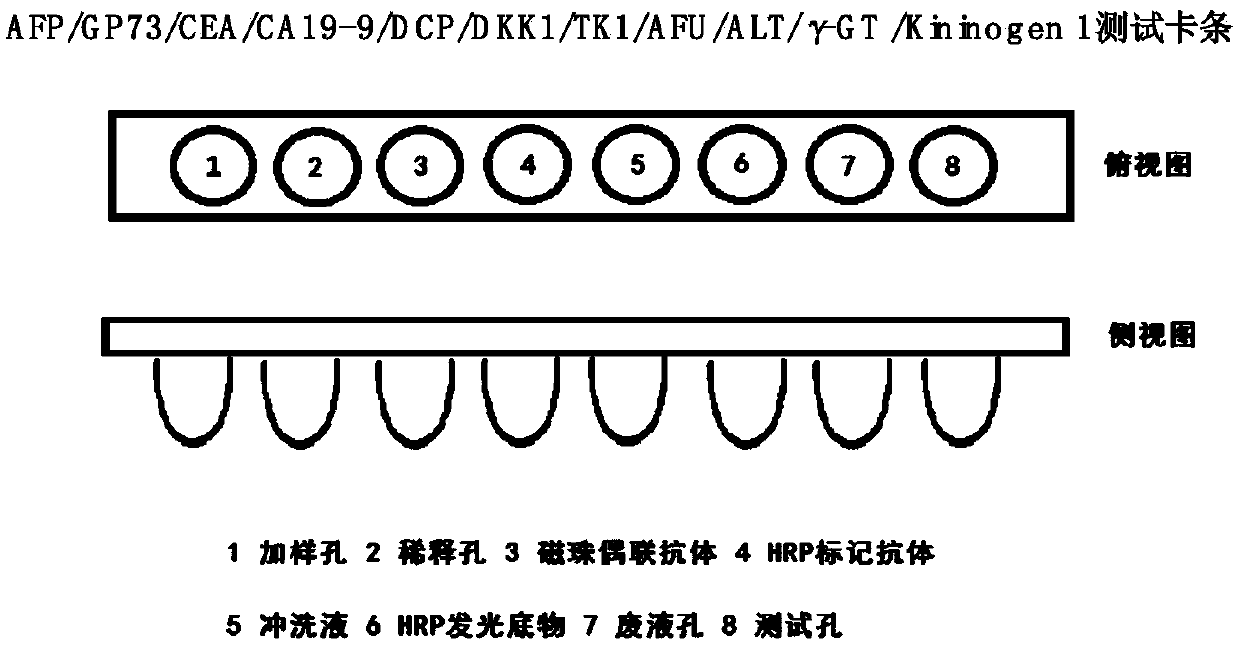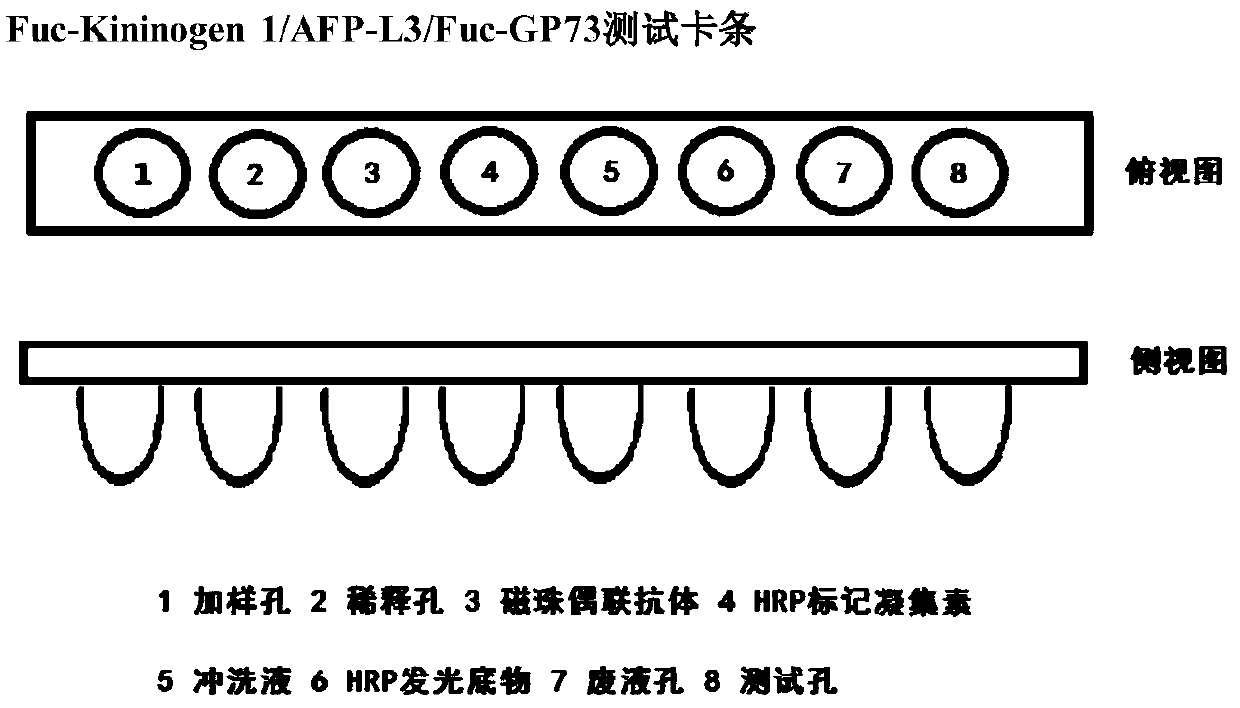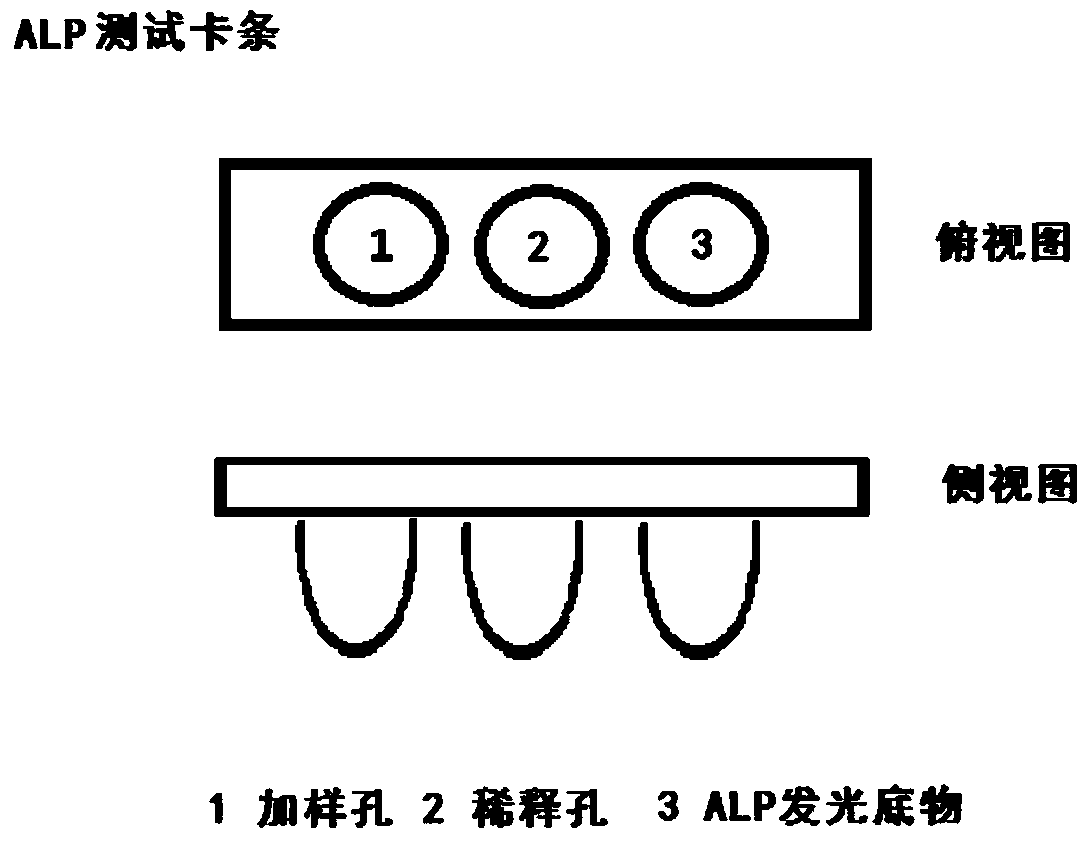Early diagnosis method and diagnostic kit for liver cancer
A technology for early diagnosis and detection kits, applied in instruments, measuring devices, scientific instruments, etc., can solve the problems of low sensitivity of HCC, low sensitivity and specificity of liver cancer, etc., and achieve the effect of improving sensitivity
- Summary
- Abstract
- Description
- Claims
- Application Information
AI Technical Summary
Problems solved by technology
Method used
Image
Examples
Embodiment 1
[0057] Example 1 Detection of AFP\GP73\CEA\CA19-9\DCP\DKK1\TK1\AFU\ALT\TK1\γ-GT\Kininogen1
[0058] principle:
[0059] The detection of AFP is carried out in test strips using an enzymatic sandwich immunochemiluminescence technique. After the AFP antigen in the biological sample is incubated with the AFP monoclonal antibody coupled to the magnetic beads in the reaction well, an antigen-antibody complex is formed through an immune reaction. After magnetic separation and washing, complexes bound to the beads are attracted to the magnetic field, while unbound substances are washed away. The antigen-antibody complex was sucked into the reaction well containing the AFP monoclonal antibody labeled with horseradish peroxidase (HRP), and after incubation, the antibody-antigen-antibody sandwich complex was formed, and the unbound substances were separated by magnetic separation. rinse off. The sandwich complex reacts with the HRP catalytic luminescent substrate to generate a chemil...
Embodiment 2
[0097] Example 2 Detection of Fuc-Kininogen 1\AFP-L3\Fuc-GP73
[0098] principle:
[0099] Detection of Fuc-Kininogen 1 is carried out in test strips using an enzymatic sandwich immunochemiluminescence technique. After the total Kiininogen 1 antigen in the biological sample is incubated with the magnetic bead-coupled Kiininogen 1 monoclonal antibody in the reaction well, an antigen-antibody complex is formed through an immune reaction. After magnetic separation and washing, complexes bound to the beads are attracted to the magnetic field, while unbound substances are washed away. The antigen-antibody complex is sucked into the reaction well containing HRP-labeled lectin (LcA), and after incubation, the fucosylated Kininongen 1 antigen binds to LcA to form an antibody-fucosylated antigen-LcA sandwich complex, Unbound material is washed away after magnetic separation. The sandwich complex reacts with the HRP catalyzed luminescent substrate to generate chemiluminescent signal....
Embodiment 3
[0119] The detection of embodiment 3 ALP
[0120] principle:
[0121] The detection of ALP adopts the direct chemiluminescence method, the biological sample is mixed with the ALP catalytic luminescent substrate, and the chemiluminescent signal is generated through the direct enzyme-catalyzed reaction.
[0122] operate:
[0123] 1. Production of ALP test strips (see image 3 )
[0124] a) Hole 1 of the test strip is the sample injection hole;
[0125] b) The No. 2 hole of the test strip is the sample dilution hole;
[0126] c) 100 μL of ALP catalytic luminescent substrate was dried and stored in the No. 3 well.
[0127] 2. Detection of ALP blood samples
[0128] a) Add 10 μL of blood sample to well 1 of the test card strip.
[0129] b) Take 190 μL of blood sample diluent from well No. 2 and add it to well No. 1 to dilute the sample by 20 times.
[0130] c) Pipette 100 μL from the diluted sample into well No. 3, shake and mix well, incubate at 25° C. for 2 minutes, and t...
PUM
 Login to View More
Login to View More Abstract
Description
Claims
Application Information
 Login to View More
Login to View More - R&D
- Intellectual Property
- Life Sciences
- Materials
- Tech Scout
- Unparalleled Data Quality
- Higher Quality Content
- 60% Fewer Hallucinations
Browse by: Latest US Patents, China's latest patents, Technical Efficacy Thesaurus, Application Domain, Technology Topic, Popular Technical Reports.
© 2025 PatSnap. All rights reserved.Legal|Privacy policy|Modern Slavery Act Transparency Statement|Sitemap|About US| Contact US: help@patsnap.com



